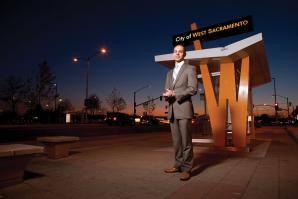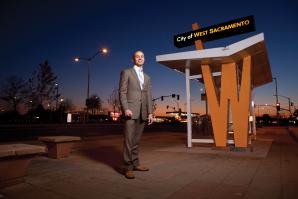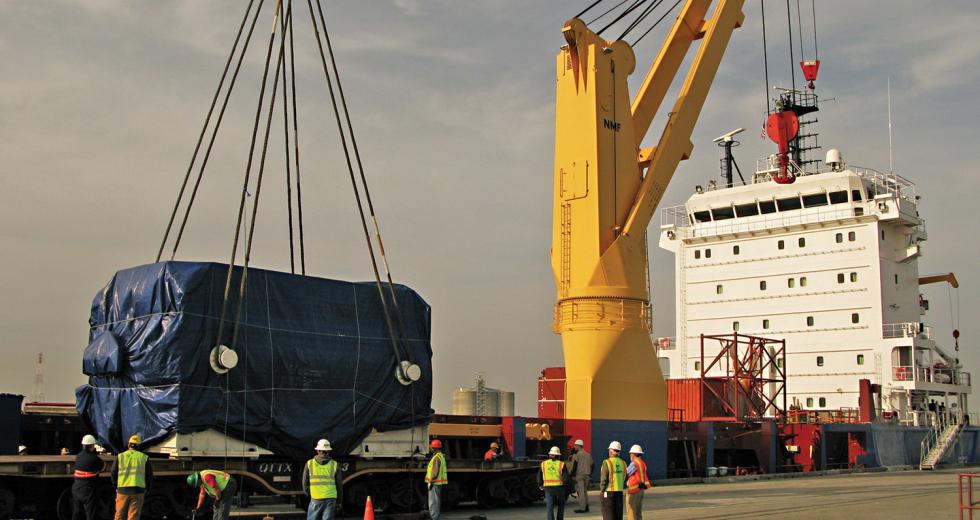Several projects are in the pipeline that could strengthen the Port of West Sacramento as a hub of green activity as soon as 2011. This month, port officials are also expecting to hear whether they would be awarded federal infrastructure dollars for the deepening of the ship channel and funds to create a strategic alliance with ports in Oakland and Stockton.
Mike Luken, port and economic development manager for the city of West Sacramento, says the biggest challenge for 2010 will be operating the port in this economy. “We have a number of projects in the pipeline, going through permitting and ready to start construction,” he says. “A number of those will come online in late 2010 or early 2011.”
One of the major reasons for the slowdown at the port has been its reliance on agricultural and building products, says Christopher Cabaldon, mayor and port commissioner. “While there is very little building activity, building materials aren’t a solid foundation to keep the port in the black,” he says. An economic analysis completed five years ago showed the port had to diversify to stay competitive, he says, so clean technology companies with a use for the waterway were a good fit.
One of the largest investments to land at the port is coming from Enligna US Inc., which could be operational by early 2011. The German company plans to bring waste from throughout the valley — unusable wood from forests, orchards and construction zones — and manufacture and export wood pellets for industrial use. The company is installing a cogeneration plant to generate electricity and heat for its manufacturing facility, which could potentially export up to 200,000 metric tons of wood pellets per year. According to Luken, the project could amount to as much as a $60 million investment at the port.
Also looking to begin operations in early 2011 is West Coast Recycling, which is based in Minneapolis. The company is looking to create a metals port terminal where they take metal waste — such as a car — shred it with heavy machinery, sort the metals and nonmetallic matter, and export it to emerging markets overseas. According to Luken, the company’s project amounts to as much as a $50 million investment at the port. When it’s fully operational, the company is expected to export 180,000 to 200,000 metric tons of metal per year.
On a much smaller — but homegrown — scale, Beeler Environmental Inc. of Sacramento approached the port about setting up a wood recycling operation on a 2.85-acre site. Port officials approved the move in December, and now the company awaits building permits, according to Luken. The company’s owner, Gabe Beeler, is an arborist who turns his landscape trimmings into mulch, which he sells throughout the region. According to port documents, Beeler sells an average of 4,500 yards per month at $23 per yard, translating to $100,000 in taxable sales for the city of West Sacramento.
Deepening the channel from 30 feet to 35 feet along its entire 43-mile length will allow more than 75 percent of fully loaded ocean-going freight ships to directly serve the Sacramento region, compared to 25 percent currently.
Although several green projects are in the pipeline, West Sacramento still faces the same challenges as the six-county region in attracting even more green companies, Cabaldon says. “Virtually every region has declared green tech as part of their target industries,” he says. “We are in a highly competitive public sector market not just in the United States, but in the world. There’s a big pie, but there’s also a lot of folks who want a bite of it.”
But landing green companies to create exports and generate tax revenue is only half of the equation; the other half is the port’s capacity to import goods. Since 1989, the port has been on a quest to deepen its ship channel. Port officials requested $12.5 million from the federal 2011 budget, up from the $2 million it received in the 2010 budget. According to port officials, deepening the channel from 30 feet to 35 feet along its entire 43-mile length will allow more than 75 percent of fully loaded ocean-going freight ships to directly serve the Sacramento region, compared to 25 percent currently. In total, the $80 million project has 35 more miles to deepen and it could wrap up as early as 2013.
Cabaldon says deepening the ship channel is essential to the long-term economic health of the port and anticipating future cargo. “The reason we are deepening is to make the port competitive to shipping commodities we currently ship. We aren’t trying to be Los Angeles or Long Beach. Those ships are getting bigger and heavier.”
Although the Port of West Sacramento isn’t trying to emulate the bigger ports, it is trying to collaborate with them. This month, port officials hope to find out whether they were awarded $58 million to fund a container-barge project in conjunction with the Stockton and Oakland ports. The funding would go toward infrastructure, such as equipment and docks. Under the agreement, large ships would still stop in Oakland, but containers would be transferred to a barge and shuttled to Sacramento or Stockton via waterway instead of highway. According to Luken, the federal Department of Transportation will announce grants around Feb. 15.
Recommended For You

West Cap Renaissance
A fresh downtown on a road less traveled
West Capitol Avenue is looking pretty snazzy these days. Modern buildings with shiny, chrome lettering line clean, wide sidewalks. Newly planted trees lead to bright bus stops stylized with sculptured ‘W’s nearly 10 feet tall.

Small City, Big Vision
Acuity with Chris Cabaldon
There is nobody more bullish on the City of West Sacramento than Mayor Chris Cabaldon. He says no city in the region can boast of a better location and, perhaps most importantly, a better water supply. With these two key attributes, the mayor believes the west-bank city is well positioned to attract business, jobs and residents for the foreseeable future.



